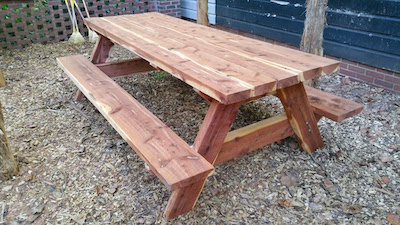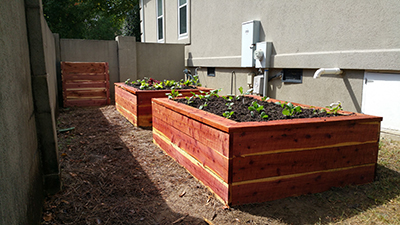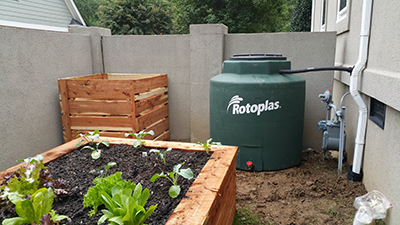Cedar Jubilation : The Children's Garden at Wing Haven
 Tuesday, November 13, 2018 at 9:19AM
Tuesday, November 13, 2018 at 9:19AM 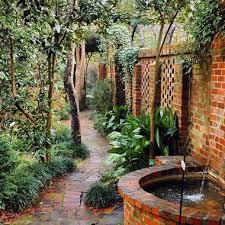
Wing Haven has long been the iconic Myers Park destination where gardening enthusiasts of all ages can enjoy local flora and fauna. Winding pathways guide guests through acres of thoughtfully curated gardens, past bubbling fountains, underneath rustic arbors, and many other delightful garden features.
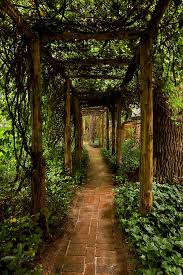
The Children’s Garden at Wing Haven has long been a main draw, with raised beds devoted to edible gardening, a whimsical chicken coop, greenhouse, compost bins and shaded picnic tables.

In summer 2018, we partnered with Wing Haven on an expansion of the Children’s Garden and delivered ten 4’x8’ Kitchen Garden raised bed kits, two fully assembled 8’ long cedar picnic tables, and a three bin cedar compost system, also delivered as a kit.

The Kitchen Garden raised bed kits consisted of all of the cedar components for each garden bed, pre-cut and ready to assemble. A keen local Boy Scout brought wood glue, exterior screws, and a few fellow scouts, and assembled the raised kits and filled them with soil as a requirement to earn the prestigious Eagle Scout rank. Wing Haven staff including Jill Goodrich supervised the scouts’ work, and created a circular layout for the garden beds that serves as an excellent gathering and area for day camps and other interactive children’s learning activities in the garden.
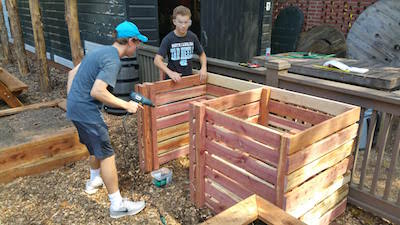
A Boy Scout from another Troop built a the three-bin compost station and kid-sized tool rack in much the same the same way ; wood glue, screws and a few eager helpers came together to assemble cedar components that had been pre-cut, bundled, and delivered to the site.
Wing Haven's Cedar Picnic Tables from Microfarm Organic Gardens on Vimeo.
The end result in both cases was remarkably good quality and workmanship, and a visually pleasing finished product. In fact, both projects were every bit as sturdy and well-made as if our own team had completed the installation.
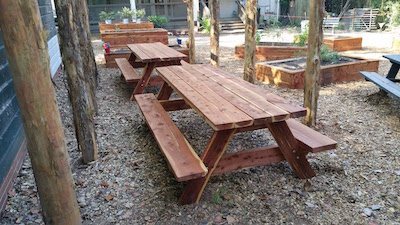
Yet, one unexpected result of these sturdy new cedar garden projects was that they now threw an unflattering spotlight on two well-worn, painted picnic tables, that were sagging from many years of service. So our craftsmen designed and built two hefty new picnic tables with rough-sawn red cedar, and stainless steel fasteners. These robust new picnic tables slapped high fives with the two retired tables on their way out, and now sit right beside the Children’s Garden garden giving young growers a comfortable, shaded place to sit and learn.
